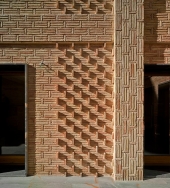




CA, Southern Sierras, alt. 4550 feet, zone 9ish. (still figuring it out), 3 mo. grow season. Regular wind to 20 mph. SANDY soil with scrub oak,pine,and juniper. 2 seasonal creeks.








"to Tinker or not to tinker, that is the question!"
If you build it better than the one profiting from it, don’t tell them, they'll get pissed! "I challenge anyone to challenge me" ... Murf! "I am responsible for the comment in this comment section"




Seed the Mind, Harvest Ideas.
http://farmwhisperer.com




Need more info?
Ernie and Erica
Wood burning stoves, Rocket Mass Heaters, DIY,
Stove plans, Boat plans, General permiculture information, Arts and crafts, Fire science, Find it at www.ernieanderica.info
 1
1




CA, Southern Sierras, alt. 4550 feet, zone 9ish. (still figuring it out), 3 mo. grow season. Regular wind to 20 mph. SANDY soil with scrub oak,pine,and juniper. 2 seasonal creeks.




CA, Southern Sierras, alt. 4550 feet, zone 9ish. (still figuring it out), 3 mo. grow season. Regular wind to 20 mph. SANDY soil with scrub oak,pine,and juniper. 2 seasonal creeks.





Seed the Mind, Harvest Ideas.
http://farmwhisperer.com




CA, Southern Sierras, alt. 4550 feet, zone 9ish. (still figuring it out), 3 mo. grow season. Regular wind to 20 mph. SANDY soil with scrub oak,pine,and juniper. 2 seasonal creeks.





Need more info?
Ernie and Erica
Wood burning stoves, Rocket Mass Heaters, DIY,
Stove plans, Boat plans, General permiculture information, Arts and crafts, Fire science, Find it at www.ernieanderica.info









Need more info?
Ernie and Erica
Wood burning stoves, Rocket Mass Heaters, DIY,
Stove plans, Boat plans, General permiculture information, Arts and crafts, Fire science, Find it at www.ernieanderica.info





Intermountain (Cascades and Coast range) oak savannah, 550 - 600 ft elevation. USDA zone 7a. Arid summers, soggy winters




CA, Southern Sierras, alt. 4550 feet, zone 9ish. (still figuring it out), 3 mo. grow season. Regular wind to 20 mph. SANDY soil with scrub oak,pine,and juniper. 2 seasonal creeks.




CA, Southern Sierras, alt. 4550 feet, zone 9ish. (still figuring it out), 3 mo. grow season. Regular wind to 20 mph. SANDY soil with scrub oak,pine,and juniper. 2 seasonal creeks.





Seed the Mind, Harvest Ideas.
http://farmwhisperer.com





Need more info?
Ernie and Erica
Wood burning stoves, Rocket Mass Heaters, DIY,
Stove plans, Boat plans, General permiculture information, Arts and crafts, Fire science, Find it at www.ernieanderica.info

|
Oh the stink of it! Smell my tiny ad!
Support permies and give beautiful gifts to gardeners: permaculture playing cards.
https://gardener-gift.com/
|






